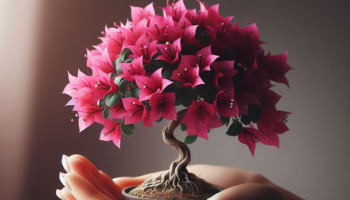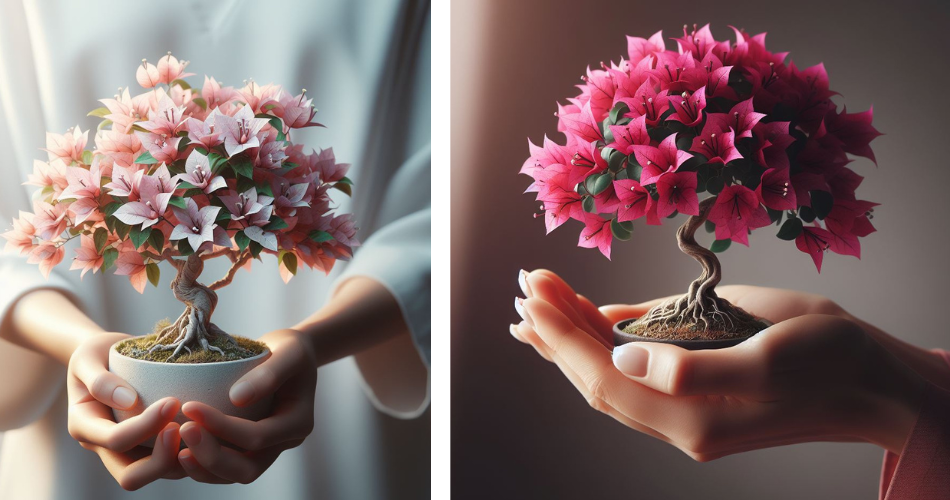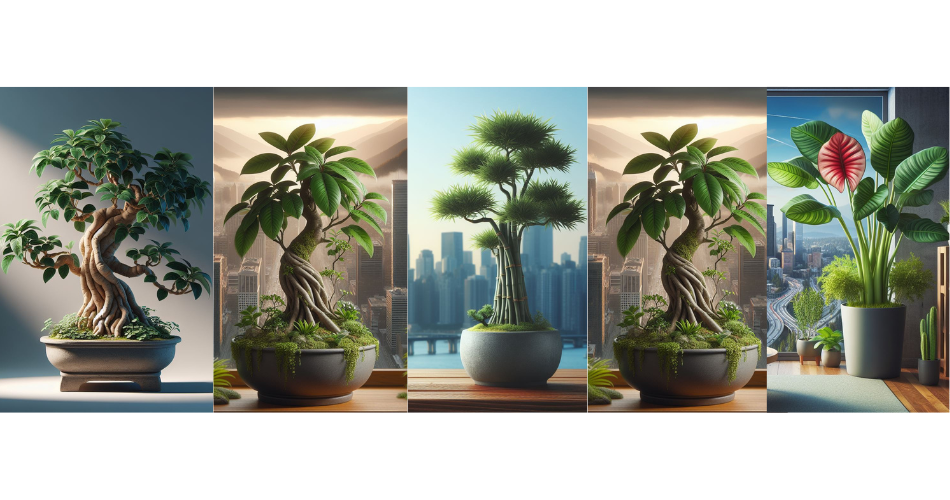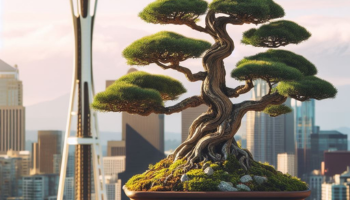
Welcome to the captivating realm of Ficus Bonsai care! In this comprehensive guide, we will delve into the intricacies of nurturing and maintaining these exquisite miniature trees, unlocking the secrets to their success. Ficus Bonsai, with its stunning foliage and intricate root systems, has gained immense popularity among bonsai enthusiasts worldwide. Whether you are a seasoned bonsai lover or a beginner looking to embark on this rewarding journey, this article will provide you with a wealth of information, expert tips, and practical advice on how to care for your Ficus Bonsai and ensure its thriving growth. So, let us embark on this adventure together and discover the art of unlocking success with care and expert tips for your Ficus Bonsai.
Exploring the Fascinating World of Ficus Bonsai
1.1 What is a Ficus Bonsai?
When you think of bonsai, you might picture a tiny tree in a pot. Well, that’s exactly what a Ficus Bonsai is! Ficus Bonsai is a form of bonsai art that involves growing and shaping Ficus trees in miniature versions. These captivating creations bring the beauty and tranquility of nature right into your home or garden.
1.2 The History and Origins of Ficus Bonsai
Ficus Bonsai has its roots (pun intended) in ancient Chinese and Japanese cultures. It originated thousands of years ago as a way to bring nature into small spaces. Over time, the art of bonsai spread across the globe, captivating enthusiasts with its intricate designs and meditative qualities.
1.3 Why Ficus Bonsai is a Popular Choice among Bonsai Enthusiasts
Ficus Bonsai has gained immense popularity among bonsai enthusiasts for several reasons. Firstly, the Ficus tree is known for its resilience, making it an excellent choice for beginner bonsai enthusiasts. Additionally, the Ficus Bonsai offers stunning foliage and can be styled in various ways, allowing for endless creativity and expression. So, whether you’re a seasoned bonsai pro or just starting your green-thumb journey, Ficus Bonsai is sure to captivate your attention.
2. Understanding the Basics: Essential Care Requirements for Ficus Bonsai
2.1 Climate and Temperature Considerations
Like most plants, Ficus Bonsai has specific climate and temperature preferences. It thrives in warm, tropical conditions, so it’s important to keep it away from extreme cold or heat. Aim for a temperature range of 60-75°F (15-24°C) to keep your Ficus Bonsai happy and healthy.
2.2 Soil Composition and Drainage
The type of soil and its drainage capabilities play a crucial role in the care of your Ficus Bonsai. Use well-draining soil that allows water to flow freely, preventing root rot. A mix of bonsai soil, peat moss, and perlite works wonders for Ficus Bonsai, ensuring it receives the right amount of moisture while allowing excess water to escape.
2.3 The Importance of Proper Potting and Repotting
Potting and repotting your Ficus Bonsai is an essential part of its care routine. It’s recommended to repot your bonsai every 1-2 years to provide fresh soil and encourage healthy root growth. Be sure to choose a pot that allows for proper drainage and gives enough space for the tree’s roots to grow.
3. Choosing the Right Location: Optimal Placement and Lighting for Ficus Bonsai
3.1 Indoor vs. Outdoor Placement
Deciding whether to keep your Ficus Bonsai indoors or outdoors depends on your climate and personal preference. Indoors, it thrives in bright, indirect sunlight. Outdoors, it can tolerate full sun but needs protection from harsh afternoon rays. So, give your Ficus Bonsai the best of both worlds by placing it outdoors during the warmer months and bringing it indoors during winter.
3.2 Ideal Lighting Conditions for Ficus Bonsai
Ficus Bonsai loves bright light but not direct sunlight that scalds its delicate leaves. Place it near a window with filtered light or use a grow light for optimal results. Rotate your bonsai every few weeks to ensure even growth and prevent it from leaning towards the light like a teenage plant trying to take a selfie.
3.3 Protecting Ficus Bonsai from Harsh Weather Elements
While Ficus Bonsai can handle a variety of weather conditions, extreme cold or heat can cause harm. If temperatures drop below 50°F (10°C), it’s crucial to bring your bonsai indoors to shield it from the chill. Likewise, during scorching summer days, provide shade or move it to a cooler spot to avoid wilting foliage.
4. Watering Techniques: Mastering the Art of Properly Hydrating Your Ficus Bonsai
4.1 Understanding Ficus Bonsai’s Watering Needs
Watering your Ficus Bonsai is a delicate dance that requires balance. It’s important to keep the soil moist but not waterlogged. Check the top inch of soil regularly, and when it feels slightly dry, water your bonsai thoroughly. Remember, overwatering can drown your tree, while underwatering can leave it parched and sad.
4.2 How to Water Ficus Bonsai Correctly
When watering, ensure that the water reaches all parts of the soil, allowing the roots to absorb moisture evenly. Water until it drains out of the drainage holes, ensuring excess water doesn’t sit in the pot. Pro tip: To maintain a healthy humidity level, mist the leaves of your Ficus Bonsai occasionally, but don’t go overboard—no bonsai showers, please!
4.3 Signs of Overwatering and Underwatering
Knowing when to water can be a bit tricky, but your Ficus Bonsai will give you subtle hints. If the leaves turn yellow and droopy, it may be a sign of overwatering. On the other hand, if the leaves start losing their luster or become brittle, your bonsai might be thirsty. So, keep a close eye on your Ficus Bonsai’s foliage to avoid any moisture-related mishaps.
5. Pruning and Shaping: Techniques for Maintaining the Aesthetic Appeal of Ficus Bonsai
5.1 Timing and Frequency of Pruning
Pruning your Ficus Bonsai is like giving it a stylish haircut. It helps maintain its shape and keeps it looking sharp. But just like with our own hair, timing is everything. Pruning should be done during the active growing season when your bonsai is feeling energetic and ready for a trim. As for how often to prune, well, that depends on how fast your Ficus Bonsai grows. Keep an eye on those branches and give them a snip when they start to get a bit too wild.
5.2 Pruning Methods for Ficus Bonsai
When it comes to pruning your Ficus Bonsai, you have a few options. You can use a pair of bonsai pruning shears for simple trimming, or you can go all out and bust out the bonsai branch cutters for more serious pruning. The choice is yours, but remember, less is sometimes more when it comes to bonsai. Take your time, step back every now and then, and make sure you’re not going overboard with the snips. You don’t want your bonsai to end up looking like a pinecone with too many branches missing.
5.3 Wiring and Shaping Ficus Bonsai Branches
Now, this is where things get a little more adventurous. If you’re feeling like a bonsai sculptor, you can use wiring techniques to shape your Ficus Bonsai branches into graceful curves and angles. It’s like giving your bonsai a yoga session. Just make sure you’re using bonsai wire that’s the right thickness and won’t dig into the branches. And remember, patience is key. Bending branches takes time, so don’t rush it. Your bonsai will thank you for the gentle touch and the stylish new look.
6. Nutrient Management: Nourishing Your Ficus Bonsai for Vibrant Growth and Health
6.1 Understanding Ficus Bonsai’s Nutritional Needs
We all need our daily dose of nutrients to stay healthy and vibrant, and your Ficus Bonsai is no different. Understanding what your bonsai craves is essential for its growth and overall well-being. Ficus Bonsai love a balanced diet, so make sure they’re getting the right nutrients like nitrogen, phosphorus, and potassium. Think of it as a gourmet meal for your mini tree.
6.2 Choosing the Right Fertilizer for Ficus Bonsai
Now that you know what your Ficus Bonsai needs, it’s time to choose the right fertilizer. Think of yourself standing in the fertilizer aisle, scratching your head, wondering which one is best. Well, fear not! Look for a balanced fertilizer specifically formulated for bonsai trees. It should have all the essential nutrients your Ficus Bonsai craves. Just remember, moderation is key. Too much fertilizer can do more harm than good, just like eating a whole tub of ice cream in one sitting.
6.3 Feeding Schedule and Application Techniques
Alright, you’ve got the perfect fertilizer, now what? It’s time to create a feeding schedule for your Ficus Bonsai. Think of it as setting up a meal plan. Feed your bonsai every couple of weeks during the growing season, and take a break during the dormant period. And when it comes to application techniques, remember to follow the instructions on the fertilizer package. Don’t go rogue and start experimenting with unconventional methods. Your bonsai might not appreciate being the guinea pig for your fertilizer experiments.
So there you have it, the secrets to pruning, shaping, and feeding your Ficus Bonsai. With a little care and expert tips, your bonsai will be thriving and turning heads in no time. Just remember to have fun with it and embrace your inner bonsai guru. Happy growing!In conclusion, caring for a Ficus Bonsai requires patience, dedication, and a deep understanding of its unique needs. By following the essential care requirements outlined in this guide, from providing the right lighting and watering techniques to mastering pruning and nutrient management, you can create an optimal environment for your Ficus Bonsai to flourish. Remember to consult expert advice, stay attuned to your tree’s specific needs, and enjoy the journey of nurturing and witnessing the growth of your Ficus Bonsai. With proper care and attention, your Ficus Bonsai will become a living work of art, bringing beauty and tranquility to your space for years to come.
FAQ
1. How often should I water my Ficus Bonsai?
The frequency of watering your Ficus Bonsai depends on several factors such as the climate, pot size, and soil composition. As a general guideline, you should check the soil regularly and water when the top inch feels slightly dry. Avoid overwatering as it can lead to root rot, and ensure proper drainage to prevent waterlogging.
2. Can I keep my Ficus Bonsai indoors?
Yes, Ficus Bonsai can thrive indoors. However, it is important to provide sufficient light for its growth. Place your bonsai near a well-lit window or provide supplemental artificial lighting. Keep in mind that indoor conditions may require more attention to humidity levels and proper air circulation.
3. How should I prune my Ficus Bonsai?
Pruning is essential to maintain the desired shape and size of your Ficus Bonsai. Use sharp, clean tools and prune during the active growing season. Start by removing any dead or unhealthy branches, and then proceed with selective pruning to promote a balanced structure. Regularly trim the foliage to encourage denser growth and refine the overall appearance of your bonsai.
4. What type of fertilizer should I use for my Ficus Bonsai?
A balanced, slow-release bonsai fertilizer is recommended for feeding your Ficus Bonsai. Look for a fertilizer specifically formulated for bonsai or one with a ratio of nitrogen (N), phosphorus (P), and potassium (K) that is suitable for woody plants. Follow the instructions on the fertilizer package for proper application and timing, adjusting the dosage based on the age and health of your bonsai.







